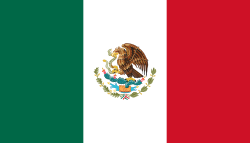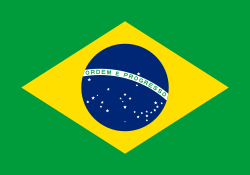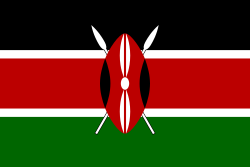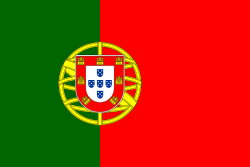Taekwondo na Letních olympijských hrách 2008 – muži do 58 kg
| Taekwondo na Letních olympijských hrách 2008 | |||||||||||||||||
|---|---|---|---|---|---|---|---|---|---|---|---|---|---|---|---|---|---|
| Taekwondo 58 kg muži | |||||||||||||||||
| Základní údaje | |||||||||||||||||
| Pořadatel | Mezinárodní federace taekwondo Mezinárodní olympijský výbor | ||||||||||||||||
| Dějiště | Beijing Science and Technology University Gymnasium | ||||||||||||||||
| Datum | 20. srpna 2008 | ||||||||||||||||
| Medailisté | |||||||||||||||||
| Soutěže | |||||||||||||||||
| |||||||||||||||||
| |||||||||||||||||
Taekwondo hmotnostní kategorie muži do 58 kg na Letních olympijských hrách 2008 se konalo v Beijing Science and Technology University Gymnasium 20. srpna. Do zápasů nastoupilo 16 mužů, kteří byli omezeni hmotnostním limitem 68 kilogramů. Základní kolo odstartovalo v 11:00, čtvrtfinále v 16:00, semifinále v 17:30, opravné zápasy v 18.30, zápasy o bronzové medaile v 19.30 a finále v 20:30. V Taekwondo se udělují dvě bronzové medaile.
Účastníci
| * | Sportovec | Úspěchy |
|---|---|---|
| 1 | ||
| 2 | ||
| 3 | ||
| 4 | ||
| 5 | ||
| 6 | ||
| 7 | ||
| 8 | ||
| 9 | ||
| 10 | ||
| 11 | ||
| 12 | ||
| 13 | ||
| 14 | ||
| 15 | ||
| 16 |
Zápasy
| Vyřazovací kolo | Čtvrtfinále | Semifinále | Zápas o zlato | ||||||||||
| | 3 | ||||||||||||
| | 2 | | 2 | ||||||||||
| | 4 | | 1 | ||||||||||
| | 3 | | 3 | ||||||||||
| | 4 | | 1 | ||||||||||
| | 2 | | 2 | ||||||||||
| | 0 | | 0 | ||||||||||
| | 1 | | (SUP) 1 | ||||||||||
| | 7 | | 1 | ||||||||||
| | 0 | | 2 | ||||||||||
| | 3 | | 3 | ||||||||||
| | 0 | | 3 | ||||||||||
| | 1 | | 2 | ||||||||||
| | 2 | | 3 | ||||||||||
| | 1 | | 2 | ||||||||||
| | 2 | ||||||||||||
Opravy
| 1. kolo | Zápas o bronz | |||||||
| | 2 | |||||||
| | 1 | | 4 | |||||
| | -1 | |||||||
| 1. kolo | Zápas o bronz | |||||||
| | 4 | |||||||
| | 1 | | 1 | |||||
| | 2 | |||||||
Média použitá na této stránce
Pictograms of Olympic sports - Taekwondo. This is unofficial sample picture. Images of official Olympic pictograms for 1948 Summer Olympics and all Summer Olympics since 1964 can be found in corresponding Official Reports.
Olympic Rings without "rims" (gaps between the rings), As used, eg. in the logos of the 2008 and 2016 Olympics. The colour scheme applied here was specified in 2023 guidelines.
Olympic Rings without "rims" (gaps between the rings), As used, eg. in the logos of the 2008 and 2016 Olympics. The colour scheme applied here was specified in 2023 guidelines.
The flag of the Dominican Republic has a centered white cross that extends to the edges. This emblem is similar to the flag design and shows a bible, a cross of gold and 6 Dominican flags. There are branches of olive and palm around the shield and above on the ribbon is the motto "Dios,Patria!, Libertad" ("God, Country, Freedom") and to amiable freedom. The blue is said to stand for liberty, red for the fire and blood of the independence struggle and the white cross symbolized that God has not forgotten his people. "Republica Dominicana". The Dominican flag was designed by Juan Pablo Duarte, father of the national Independence of Dominican Republic. The first dominican flag was sewn by a young lady named Concepción Bona, who lived across the street of El Baluarte, monument where the patriots gathered to fight for the independence, the night of February 27th, 1844. Concepción Bona was helped by her first cousin María de Jesús Pina.
Chinese Taipei Olympic Flag. According to the official website of Chinese Taipei Olympic Committee, Blue Sky(circle) & White Sun(triangles) above the Olympic rings is neither the National Emblem of the Republic of China, nor the Party Emblem of Kuomintang (KMT), but a design in between, where the triangles do not extend to the edge of the blue circle, as registered at International Olympic Committee in 1981 and digitally rendered in 2013. Besides, the blue outline of the five-petaled plum blossom is broader than the red one. Moreover, the CMYK code of the blue one and the Blue Sky & White Sun is "C100-M100-Y0-K0", and different from the Olympic rings (C100-M25-Y0-K0). Note that it's the only version recognized by IOC.
An icon that represents a silver medal
An icon that represents a gold medal
The flag of the Dominican Republic has a centered white cross that extends to the edges. This emblem is similar to the flag design and shows a bible, a cross of gold and 6 Dominican flags. There are branches of olive and palm around the shield and above on the ribbon is the motto "Dios,Patria!, Libertad" ("God, Country, Freedom") and to amiable freedom. The blue is said to stand for liberty, red for the fire and blood of the independence struggle and the white cross symbolized that God has not forgotten his people. "Republica Dominicana". The Dominican flag was designed by Juan Pablo Duarte, father of the national Independence of Dominican Republic. The first dominican flag was sewn by a young lady named Concepción Bona, who lived across the street of El Baluarte, monument where the patriots gathered to fight for the independence, the night of February 27th, 1844. Concepción Bona was helped by her first cousin María de Jesús Pina.
An icon that represents a bronze medal
Flag of Iran. The tricolor flag was introduced in 1906, but after the Islamic Revolution of 1979 the Arabic words 'Allahu akbar' ('God is great'), written in the Kufic script of the Qur'an and repeated 22 times, were added to the red and green strips where they border the white central strip and in the middle is the emblem of Iran (which is a stylized Persian alphabet of the Arabic word Allah ("God")).
The official ISIRI standard (translation at FotW) gives two slightly different methods of construction for the flag: a compass-and-straightedge construction used for File:Flag of Iran (official).svg, and a "simplified" construction sheet with rational numbers used for this file.
Flag of Portugal, created by Columbano Bordalo Pinheiro (1857–1929), officially adopted by Portuguese government in June 30th 1911 (in use since about November 1910). Color shades matching the RGB values officially reccomended here. (PMS values should be used for direct ink or textile; CMYK for 4-color offset printing on paper; this is an image for screen display, RGB should be used.)
The national flag of Kingdom of Thailand; there are total of 3 colours:
- Red represents the blood spilt to protect Thailand’s independence and often more simply described as representing the nation.
- White represents the religion of Buddhism, the predominant religion of the nation
- Blue represents the monarchy of the nation, which is recognised as the centre of Thai hearts.





















